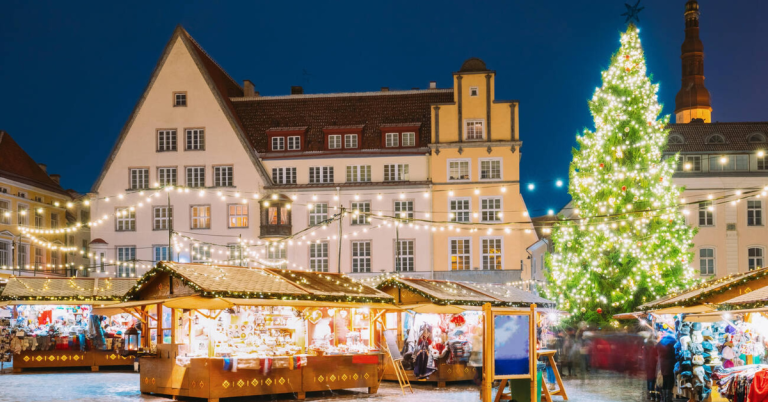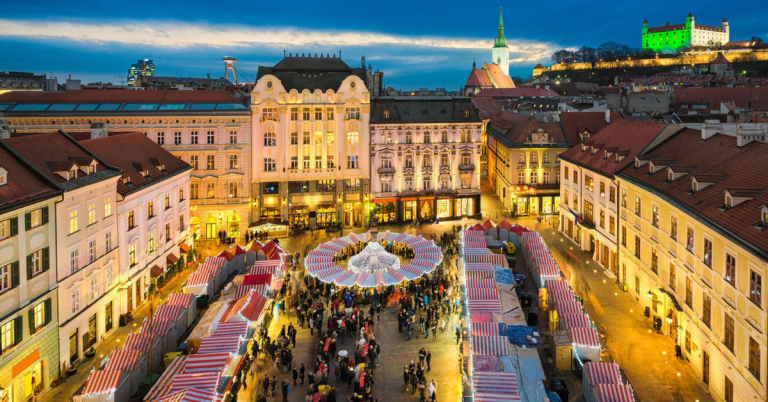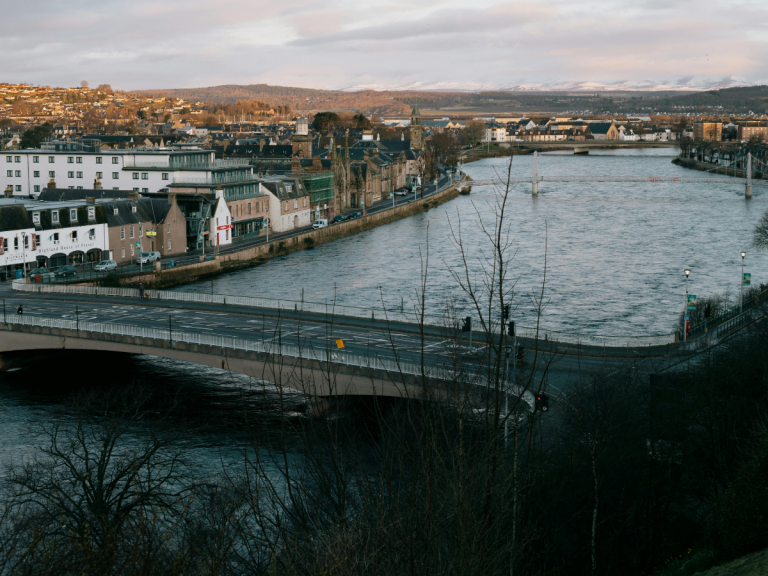The Perfect 10 Day Japan Itinerary for First-Timers
The Mobile Homie contains affiliate links and is a participant in the Amazon Services LLC Associates Program, as well as other affiliate programs. If you click on a link or make a purchase through one of these links, we may earn a small commission at no extra cost to you. For more details, see our Privacy Policy.
Japan is a traveler’s paradise! Lots of unique foods to try, sights to see, and countless activities to occupy your entire trip. Every person that I’ve met who has gone to Japan has loved it! I mean, how can you not? The food is absolutely delicious (and affordable), the culture is so rich, and absolutely everyone you meet is kind. Not to mention, there’s a 7/11 on every corner. It’s a dream destination!
With so many options on the table, it can be a bit intimidating when it comes to planning your trip to Japan.
What cities should you visit? Do you need to buy a JR Pass? Where should you stay? How do you get to your hotel from the airport?
Don’t worry! We will go through all of those questions (and more) and make sure that no matter how long you visit, you will have a great time!
Because of Japan’s amazing public transit (the metro and the Shinkansen), it is possible to cover a lot of ground in a short amount of time. Japan is one of my favorite countries, and I can’t wait to share some of my favorite things about it!
I spent months doing in depth research and preparing for my trip to Japan, but I feel like nothing prepared me for the real thing. Even though I have traveled to 34 countries, Japan’s culture, food, and friendliness still shocked me!
Even though Japan shocked me culturally, thanks to my vigorous research – I was prepared when it came to accommodation, food, and public transit! So, to make it easier on you, here is a sample 10 day Japan itinerary based on my years of travel experience to make sure that you get to see the best parts of Japan in 10 days and get to experience a taste of Japanese culture.
10 Day Japan Itinerary
Japan Itinerary Overview:
Day 3: Day Trip to Hakone (Mt. Fuji)
Day 7: Day trip to Miyajima Island
Day 0: Japan Public Transit
If you’re flying to Japan from the US, odds are that you will start your trip at either Tokyo Narita Airport or Tokyo Haneda Airport. If you fly into Haneda, it is a little closer to the city (and more convenient), but flying into either is fine!
How to get to Tokyo from Haneda:
Getting there: You can take the Tokyo Monorail to get to central Tokyo.
Time: Approximately 15 minutes.
Cost: 500 JPY per adult (If you get a Suica card, it will cover the Monorail).
How to get to Tokyo from Narita Airport:
Getting there: You can take the Narita Express to get into central Tokyo!
Time: Approximately 1 hour.
Cost: 3,250 JPY per adult.
Should you get a JR Pass?
If you follow this itinerary, it is cheaper to pay for the individual Shinkansen tickets than it is to purchase a JR Pass. If you plan to do more day trips or decide to add another city or two – it might be worth it! I would go to the JR website, plan out your routes, and see what is cheaper!
If you do decide to get the JR pass for your 10 days in Japan, I would recommend exchanging your JR vouchers for the actual ticket at a smaller station in Tokyo rather than the airport. Exchanging your pass at the airport often includes standing in long lines (not the best way to start your trip)!
Days 1 & 2: Tokyo
Where to stay in Tokyo?
Tokyo is HUGE and there are so many neighborhoods where you can stay! After researching all of the different neighborhoods to stay in, I couldn’t even decide on one. Instead, I stayed in two – Akasaka and Asakusa. Both were very centrally located to what we wanted to see, and were close to the restaurants I had on my list. I would recommend both hotels I stayed in for different reasons, but the location of both of them were just unbeatable!
Where I stayed:
Akasaka: 9 Hours Sleep Lab
Asakusa: Ano Hotel
Things to do in Tokyo:
Even though you might be staying in Tokyo, don’t underestimate the sheer size of the city! There are so many different parts to the city, and each one is completely different. We were there for 3 days and tackled 4-5 different parts, but I would recommend choosing one or two areas where you’d really like to go (based on the activities), and then visit the neighboring area as well. Here are some of my favorite neighborhoods that I visited:
Shibuya: Spend your first day exploring the bustling area of Shibuya! Walk through the iconic “Scramble” crosswalk of Shibuya Crossing – nearly 3,000 people can cross at the same time! Explore the shops and restaurants in Miyashita Park, and then head to Shibuya Sky for one of the highest views of the city. If you’re debating between Shibuya Sky and Tokyo Skytree, Shibuya is better in my opinion. For an extra thrill, you can Go-Kart through Shibuya Crossing with Monkey Kart! We had the best time doing this – but don’t forget your international driver’s permit!
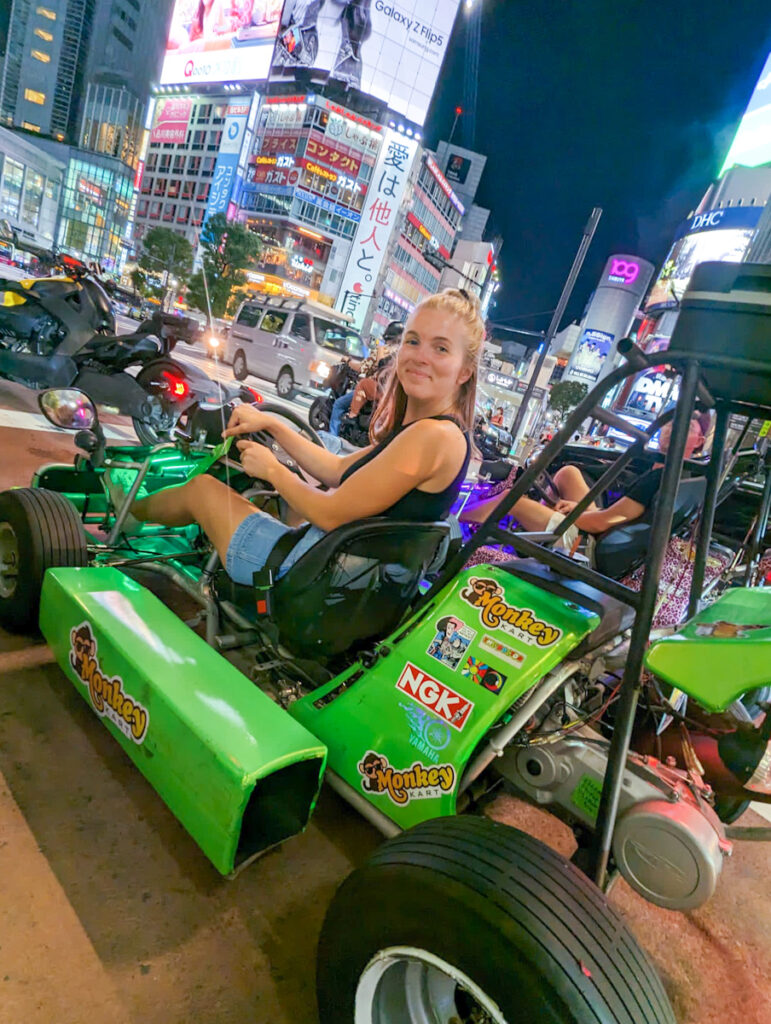
Asakusa: Visit Tokyo’s oldest buddhist temple Senso-ji (Asakusa Kannon Temple), and walk under the wood carved lantern. Don’t forget to draw omikuji at the temple & make sure to get there early to avoid crowds. For lunch (or dinner) head over to the viral Ichiran Ramen restaurant and experience eating in a private booth. For sunset, head over to Tokyo Skytree and soak in the amazing views.
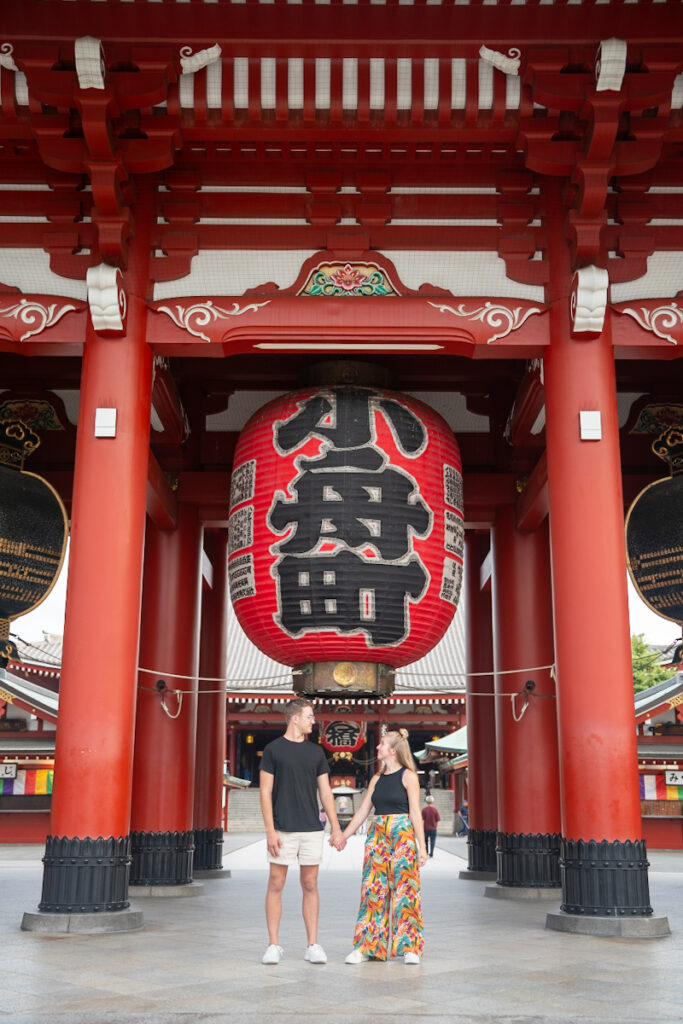
Odaiba & Toyosu: Start your morning at the Tsukiji Outer Market for some fresh seafood, or head over to TeamLab Planet (make sure to book in advance). You can also find Rainbow Bridge in Tokyo Bay.
Harajuku: After a day spent in the bustling city, spend some time wandering in the peaceful area of Meiji Jingu Shrine. After exploring the shrine, head back to the main street (where the entrance is). The main street has a ton of shops and delicious sweet treats.
Day 3: Day Trip to Hakone (Mt. Fuji)
If you want to get out of the hustle and bustle of Tokyo, Hakone is a great option – especially if you want to catch a glimpse of Mt. Fuji! There are other places with better views of Mt. Fuji, but Hakone is easily accessible as a day trip and allows you to have plenty to do – even if you cannot see Mt. Fuji due to cloud coverage.
If you want to see all the sights in Hakone, the best way to do that is by purchasing the Hakone Free Pass. This pass includes access to trains, cable cars, ropeways, boats and major bus lines where you can access hot springs, shrines, and even a volcano!
How to get to Hakone:
Go from Tokyo Shinjuku Station to Hakone Yumoto Station via Odakyu Express
How long does it take?
Approximately 75 Minutes
How much does it cost?
JPY 6,100 per adult round trip
Days 4 & 5: Kyoto
Days 4 & 5 of my sample itinerary for Japan is for Kyoto. This is a city that stole my heart when it comes to food (seriously, I don’t think I’ve had better food in my life)! As Japan’s ancient capital, you could spend weeks if not months in this city, but in 2 days, it gives you a glimpse of all of the amazing cultural and gastronomic aspects and makes you leave wanting more!
Where to stay in Kyoto?
Of course, Kyoto is known for the famous sites like Fushimi Inari Shrine, Kiyomizu-dera Temple, and Nishiki Market – which are all must dos, but there is so much more! I found Kyoto extremely easy to navigate if you’re willing to walk a little. With that being said, in my opinion, staying just about anywhere is easy enough to get to the main sights, but if you want to get up early, I would recommend staying a bit closer to whatever is on your list! If you are looking to add an extra night on your 10 day Japan itinerary, this is where I would add a night!
Where I stayed:
Gojo: Chisun Standard Hotel
Gion: I have also stayed in a Ryokan in Gion which was fantastic to explore the surrounding neighborhood!
Things to do in Kyoto:
If you want a “crowdless” adventure, I would recommend starting your day early. I made a list of 3 places I wanted to see with less of a crowd and each day went to a new one. The Arashiyama Bamboo Forest, Fushimi Inari Shrine, or Yasaka Pagoda are great places to go in the early morning.
Northern Kyoto: Home to Arashiyama Bamboo Forest and Kinkaku-ji Temple, this is a great place to get an early start. Don’t forget to visit the lesser known Gio-ji Temple and Moss Gardens as well.
Downtown Kyoto: Head over to Nishiki Market around lunchtime, and visit some of the surrounding restaurants. You can also walk through the market and visit the seemingly endless amount of shops! This is also a great place to book a food tour for the evening. You can also see Kyoto Tower and visit the famous Yasaka Temple in the late afternoon.
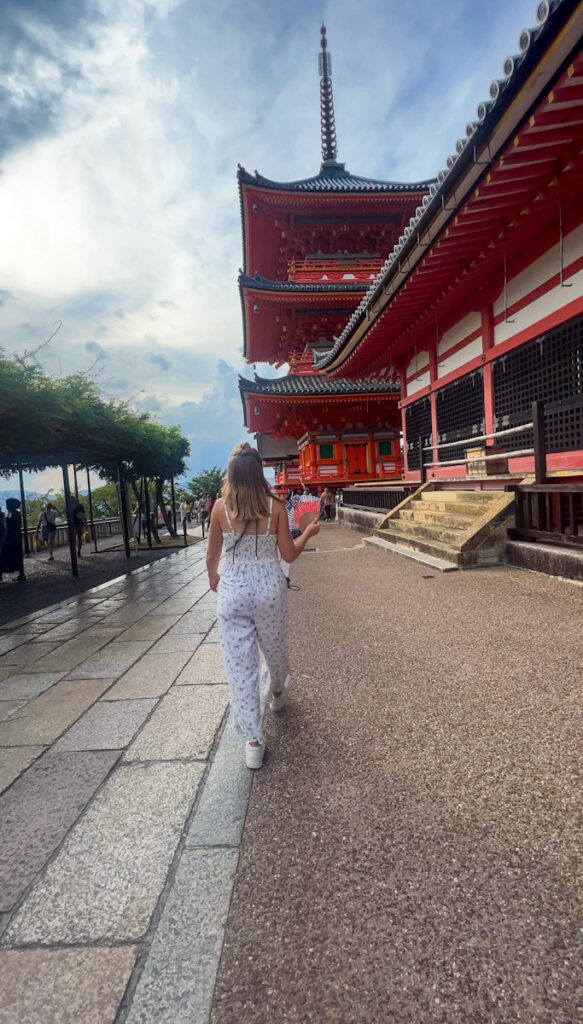
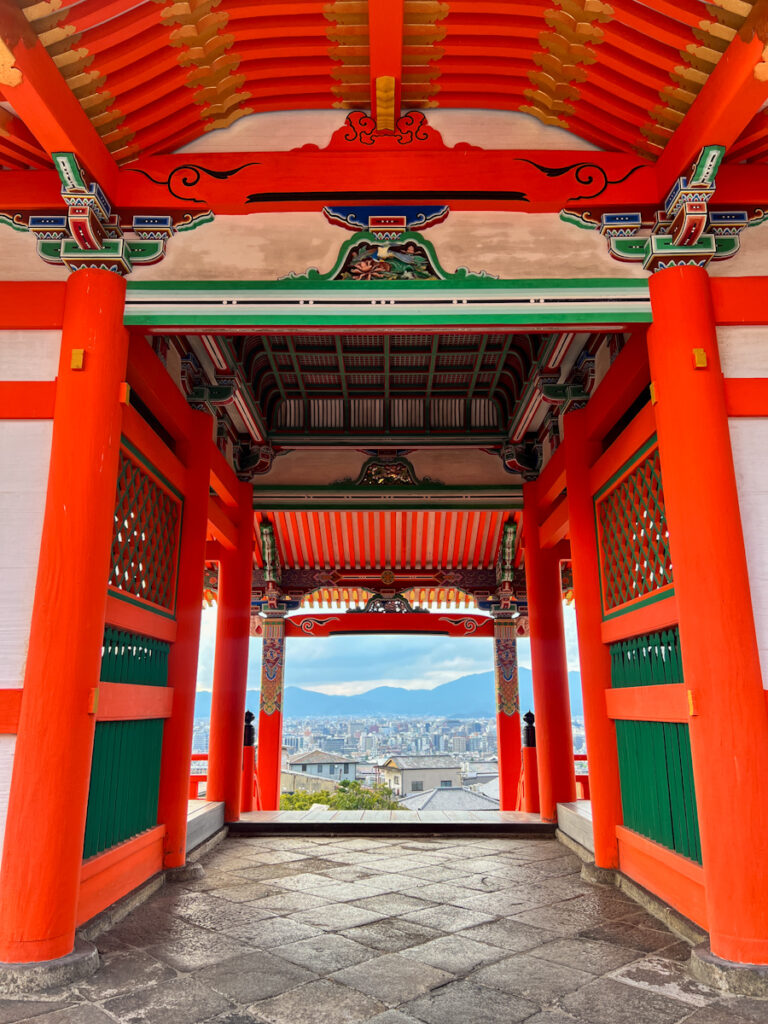
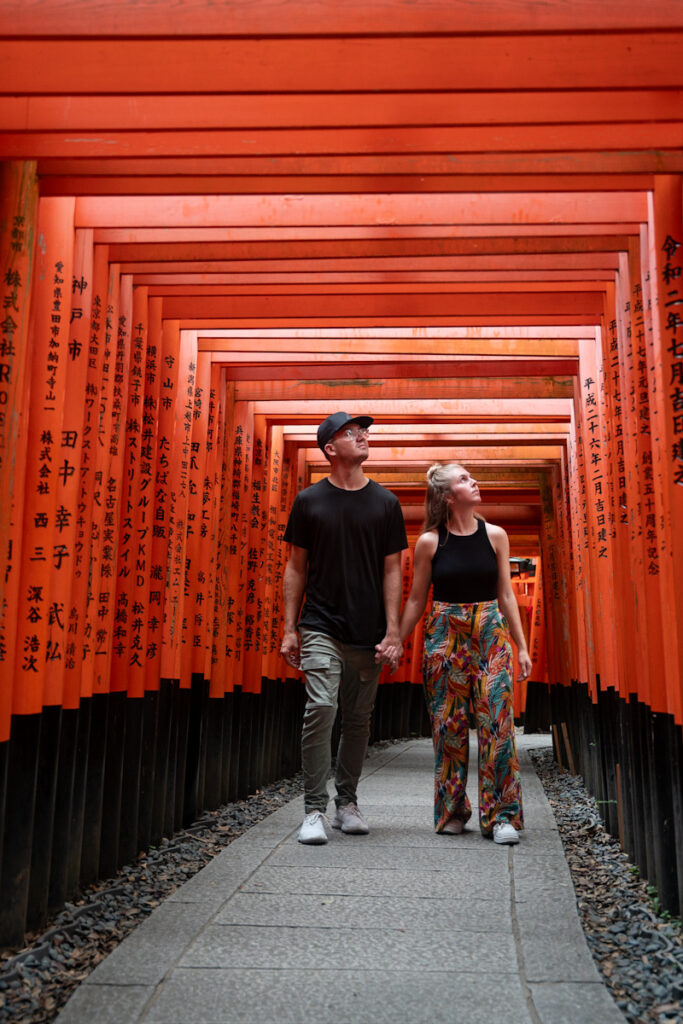
Where to eat in Kyoto?
Kyoto is home to one of my favorite restaurants of all time Gyoza-dokoro Sukemasa – Takatsuji Main Shop ぎょうざ処 高辻 亮昌. Rated almost 5 stars on Google Maps, this restaurant is so good, we went back twice.
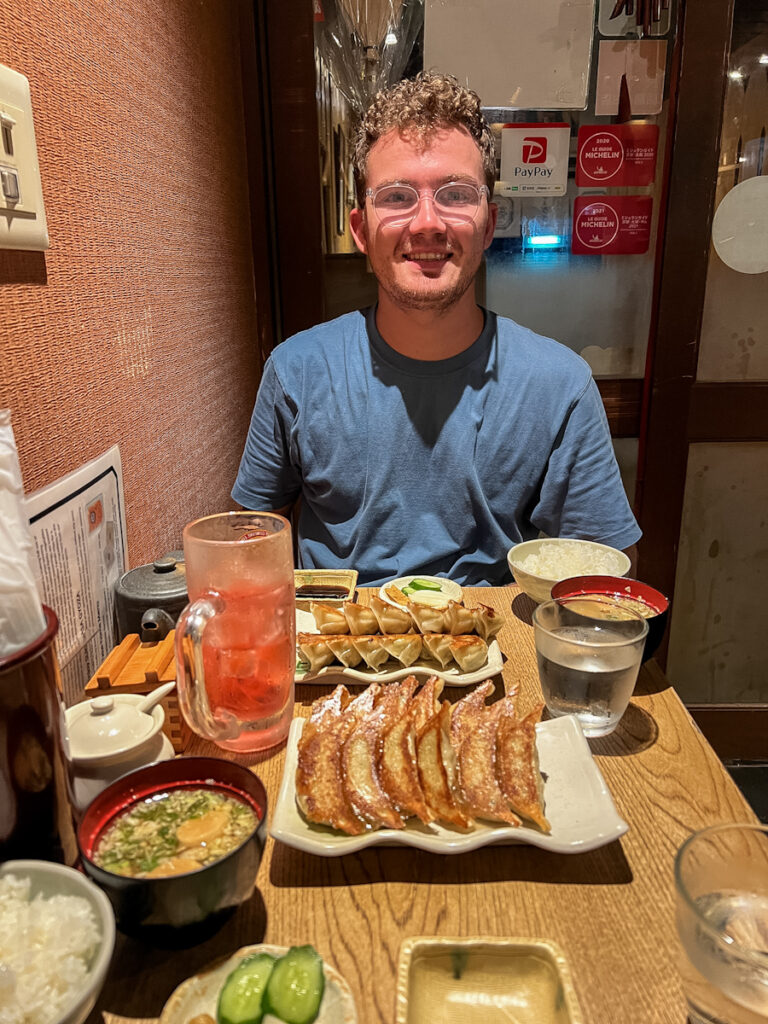
Day 6: Hiroshima
Hiroshima is a must-stop for first time travelers to Japan. The history that Hiroshima holds is definitely an important one to be shared, but also a surreal one to see in real life. Walking around the seemingly peaceful city, you would have no idea that an atomic bomb was dropped there nearly 80 years ago.
In my opinion, it’s worth staying the night and then heading over to Miyajima Island the next morning.
How to get to Hiroshima from Kyoto:
Travel to Hiroshima from Kyoto via Shinkansen Bullet train.
How long does it take?
Approximately 1 hour 40 minutes
How much does it cost?
Starting fare of JPY 10,500 per adult for unreserved seat (included in JR Pass)
Where to stay in Hiroshima?
Hiroshima is very walkable and there is also a trolley that goes through the main part of town. If you are there to go to the peace garden and museum, I would recommend staying rather close to there so you can venture out on foot. There are lots of local shops and restaurants in close proximity as well.
Where I stayed:
Kiro Hotel – Great location near the Okonomiyaki center!
J-Hoppers Guesthouse – Kind of a hostel, kind of a Ryokan…I would recommend finding a more authentic Ryokan if that’s what you’re looking for
Things to do in Hiroshima:
If this is your first time in Hiroshima or even your first time in Japan, definitely go to the Peace Memorial Park, the Peace Museum, the Atomic Dome, and see where the atomic bomb detonated. If you want a more in depth experience in Hiroshima, there are also lots of customized tours where you are taken around by a local and shown different sights more in depth.
Beyond that, Hiroshima is known for the dish Okonomiyaki – visit the Okonomiyaki center and give this meal a try. They prepare the entire meal in front of you on a teppanyaki table, and you eat right off of it! You can find the best Okonomiyaki at the Okonomimura, a four story building full of different restaurants each making their own Okonomiyaki! You can’t go wrong!
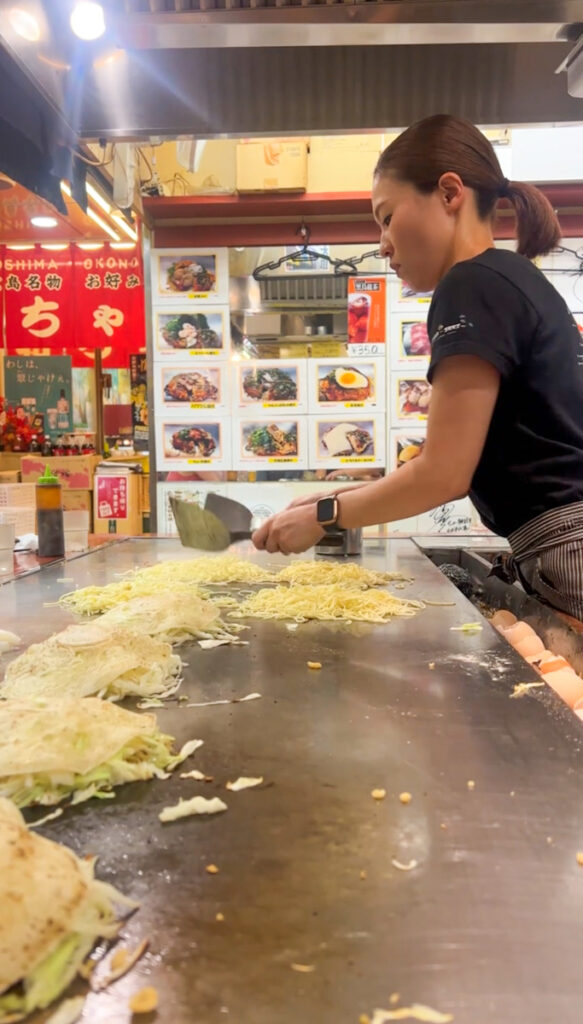
Day 7: Day trip to Miyajima Island
Miyajima Island is a must visit when going to Japan and from Hiroshima – you’re so close. Besides the Itsukushima Shrine, Miyajima Island is truly a unique sight. You have to take a ferry from the mainland, but when you arrive at Miyajima Island, it is a beautiful and welcomed sight.
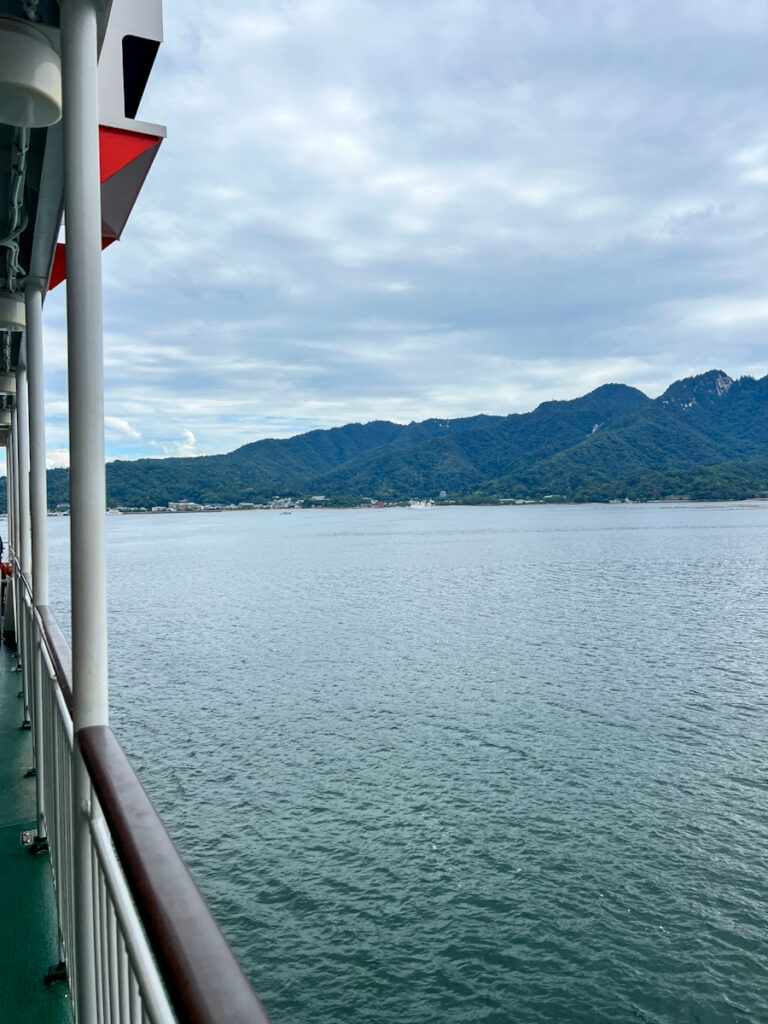
Something to note is that the island is filled with deer, so be mindful of your belongings – they can get a bit aggressive. Another thing to note is that most restaurants and shops close just after sunset, so if you want to stay the night on the island, be mindful and make sure you find somewhere to eat before then.
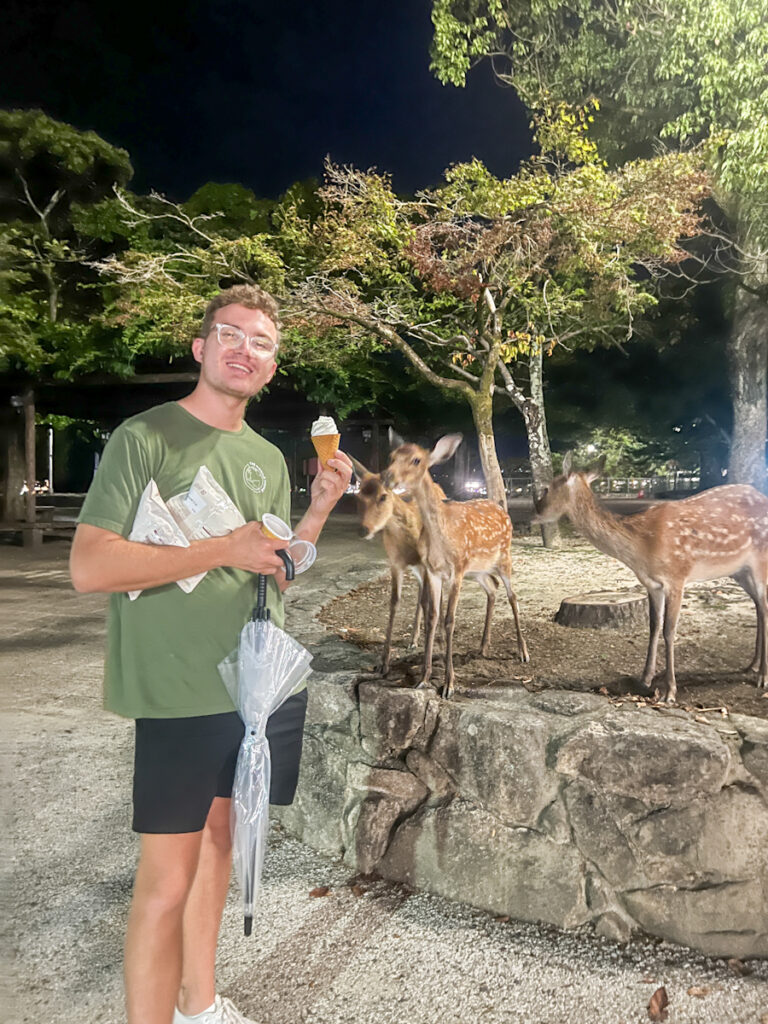
How to get to Miyajima Island:
There are two ways to get to Miyajima Island from Hiroshima. One is a lot faster, but more expensive, and the other is slower, but more budget.
The fast way:
The most convenient and fastest way to get to Miyajima Island is by taking the Aqua Net Ferry directly from the Peace Memorial Park. It costs a total of JPY 3,600 round trip and takes about 45 minutes.
The budget way:
This takes a bit longer, but a more affordable way to get to Miyajima Island is by taking a train from Hiroshima Station (or most any station throughout the city) to Miyajima-guchi Station (about 30 minutes and JPY 260). Then, take the ferry from Miyajima-guchi pier to Miyajima Island. The train and ferry are covered with the JR Pass).
Where to stay on Miyajima Island?
The island is very walkable, but it is a giant hill, so just keep that in mind. I would recommend staying somewhere pretty central so you can walk to all of the sights and shrines. A lot of people only go for the day, but because of the tidal schedule, I wanted to be at the Itsukushima Shrine for sunrise, so we opted to spend the night. If you are short on time in your 10 day Japan itinerary, this is a good night to skip.
Where I stayed:
LiveMax Resort – Very centrally located and easily walkable to any location. They had multiple onsens and a very friendly staff!
What to do on Miyajima Island?
An absolute can’t miss when you are on Miyajima Island is the Itsukushima Shrine, a UNESCO World Heritage site. You literally cannot miss it because you can see it from the ferry as you pull in. It is a fantastic and unique site to visit – especially at different times of day. Sometimes it’s covered in water and other times you can walk right under it! The five story pagoda is definitely another site that you cannot miss! Unfortunately, when I was there in September, it was under construction, but a great sight nonetheless.
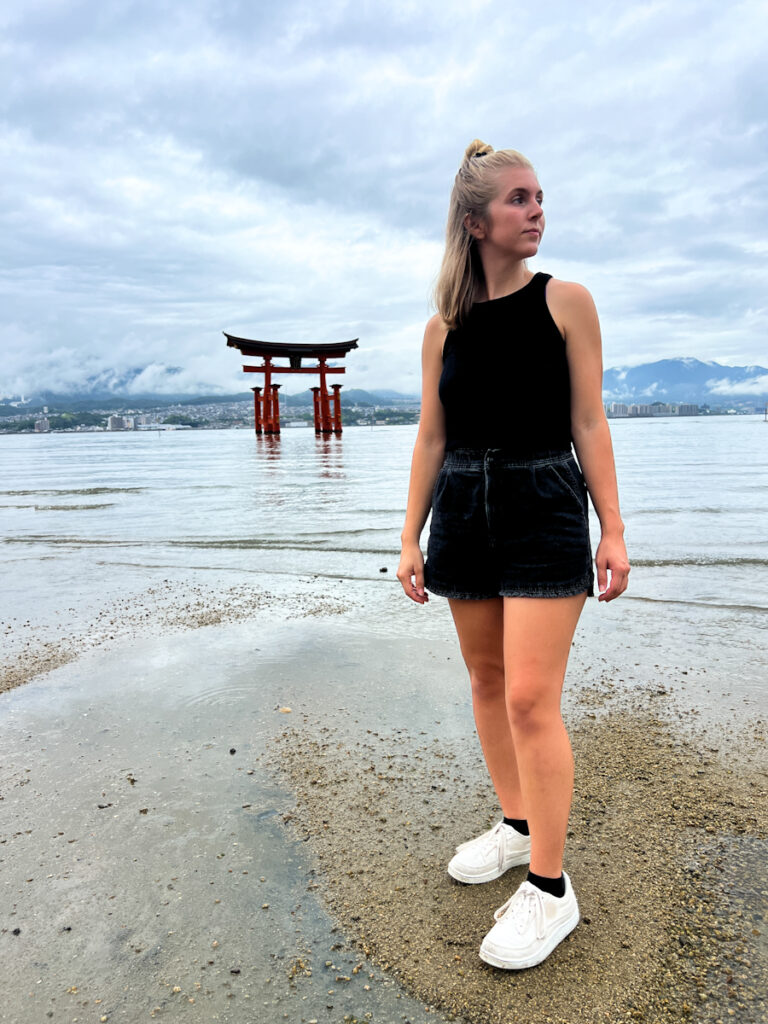
If you are a hiker or just someone who enjoys seeing places from above, I would highly recommend going on one of the many hiking trails that the island has to offer – there is also a ropeway to bring you to the top!
While you’re there, don’t forget to try Miyajima’s famous oysters and grab a bite of some okonomiyaki! There are also plenty of food tours and walking tours on the island if you want to see more!
Day 8: Osaka
Osaka is known for its food, so if you think you’ve eaten a lot in the rest of the country – just wait. In Osaka, you can occupy yourself with a range of activities – from visiting Osaka castle to visiting Universal Studios Japan – you can find something to do!
How to get to Osaka from Hiroshima?
You can get to Osaka from Hiroshima via the Shinkansen
How much does it cost?
About JPY 10,900 per adult (free with JR Pass)
How long does it take?
Approximately 1 hour and 20 Minutes
Where to stay in Osaka?
You can’t go wrong with staying in Dotonbori. Everything you might want to see is very centrally located from there. When I went, I did not even stay the night, I found that I could see what I wanted to see all in one day! If you are short on time in your 10 day Japan itinerary, this is a good night to skip.
What to do in Osaka?
Osaka is famous for their endless street food and I would not leave the city without a proper food tour! Kuromon Ichiba Market is filled with locals and visitors – it is a great location to take a food tour!
Head over to Osaka Castle museum and visit the grounds! We went on a weekday and while it had some visitors, it wasn’t nearly as packed as some of the other sites we visited in Tokyo.
Discover the Retro Shinsekai Neighborhood! In complete opposition to the modern city center, this neighborhood makes you feel like you stepped back in time! Arguably one of the coolest sights in Osaka, it’s definitely worth a visit.
End your day in Dotonbori and make sure to wait until the sun goes down. The whole street lights up and fills with people!
Day 9: Osaka to Tokyo
Take this opportunity to visit a neighborhood in Tokyo that you didn’t get to visit the first time, take a daytrip from Tokyo, or head back to the airport. I also used this time to visit some restaurants I didn’t get to go to the first time!
Getting back to Tokyo from Osaka:
Take the Nozomi Shinkansen from Osaka Station to Tokyo Station.
How long does it take?
Approximately 2 hours and 40 Minutes.
How much does it cost?
About JPY 14,500 per adult (free with JR Pass)
Day 10: Tokyo, Fly Home
How to get to Haneda from Tokyo:
Getting there: You can take the Tokyo Monorail to get back to Haneda.
Time: Approximately 15 minutes.
Cost: 500 JPY per adult (If you get a Suica card, it will cover the Monorail).
How to get to Narita Airport from Tokyo:
Getting there: You can take the Narita Express to get back to Narita.
Time: Approximately 1 hour.
Cost: 3,250 JPY per adult.
How to purchase Shinkansen tickets?
You can purchase Shinkansen tickets in advance or in person once you get to Japan. For me, purchasing Shinkansen tickets through the machine did not work (I think it was because of my US credit card), but when I went to an actual person, I had no problem purchasing.
Other things to know about the Shinkansen?
It is important to note that the Nozomi and Mizuho Shinkansen trains are the fastest – but they are not included in the JR Pass. If you are considering purchasing the JR Pass, it would be better to plan your itinerary, add up the totals, and see which option is better – purchasing individually or purchasing the JR Pass.
Something else to consider is whether to purchase seat reservations or not. When I went, it was during September and not too busy, so seat reservations were not a big deal, but in peak season that could definitely be an issue. Seat reservations can cost up to JPY 500 and can be purchased at the counter. Also, if you have large luggage, you might need a reservation for that too.
Conclusion
So that’s it! It may seem like we jam packed our 10 day Japan itinerary (which we kind of did), but we both felt like we had plenty of downtime and flexibility with our 10 days in Japan. If this is your first time going to Japan, this itinerary covers a lot of stuff that you’re going to want to see, but if you’ve been there before, you might want to dive a bit deeper.
One last piece of advice that I have is to learn a few phrases in Japanese before going. If the language barrier scares you at all, make sure to download Google Translate (and download the language to have offline). Either way, try to learn “hello”, “goodbye”, “thank you”, and it’s always an extra special treat to learn a compliment or two (especially when talking about food).
Want to learn about some of Japan’s best snacks? Check out my blog post here!

